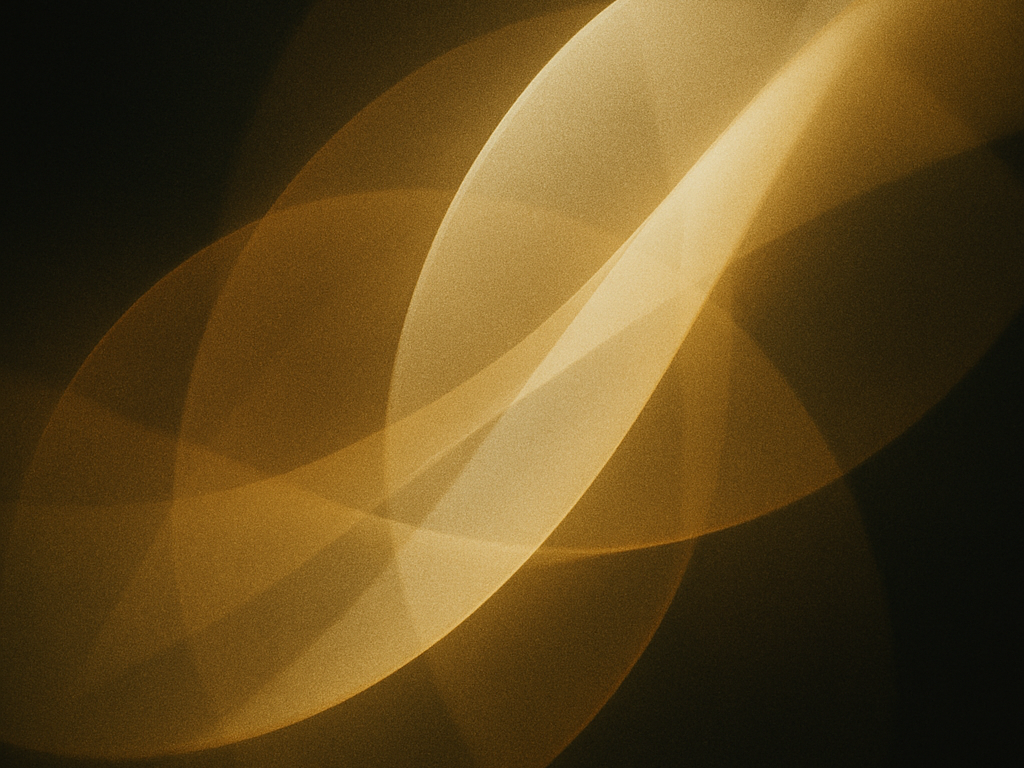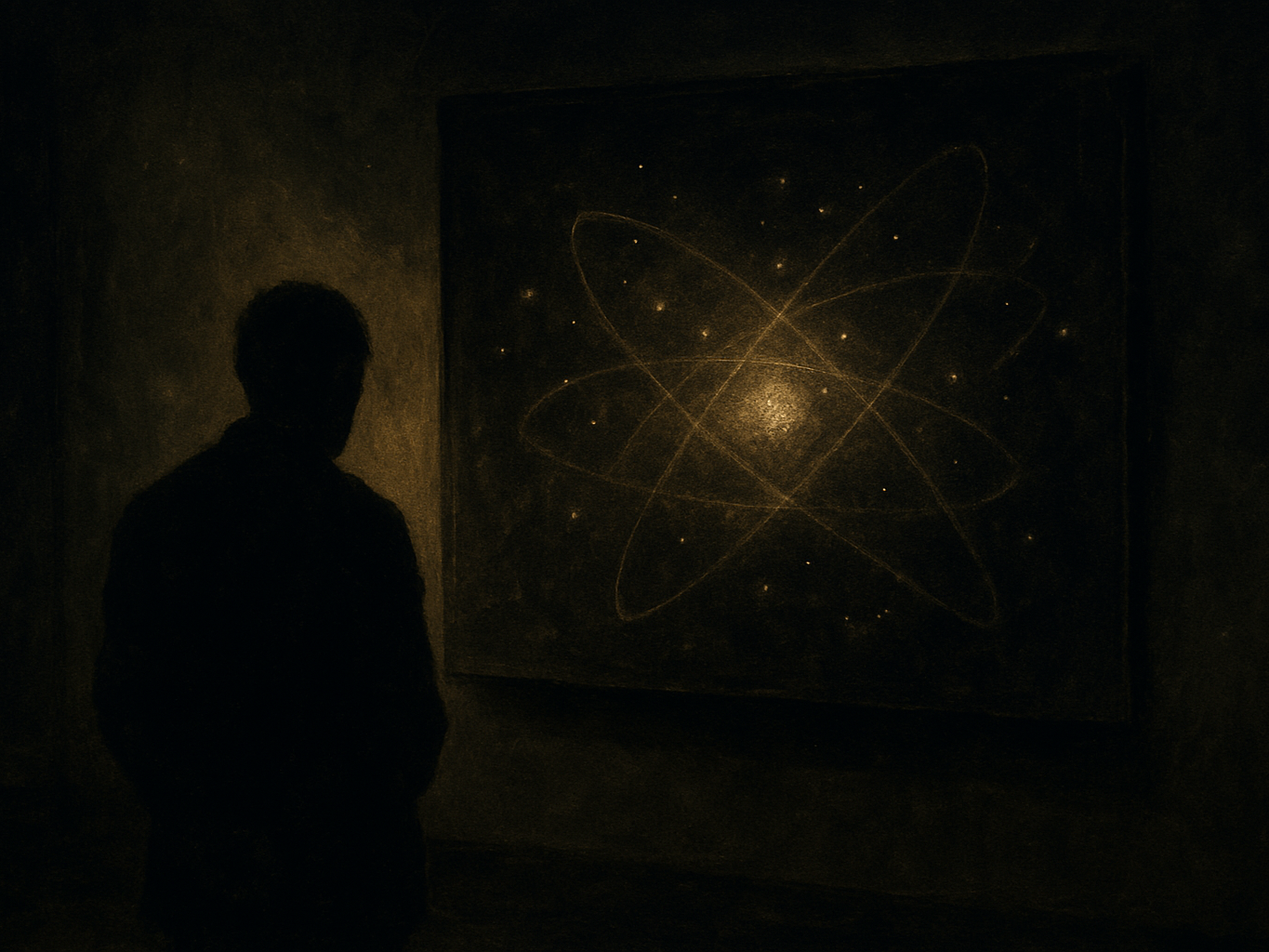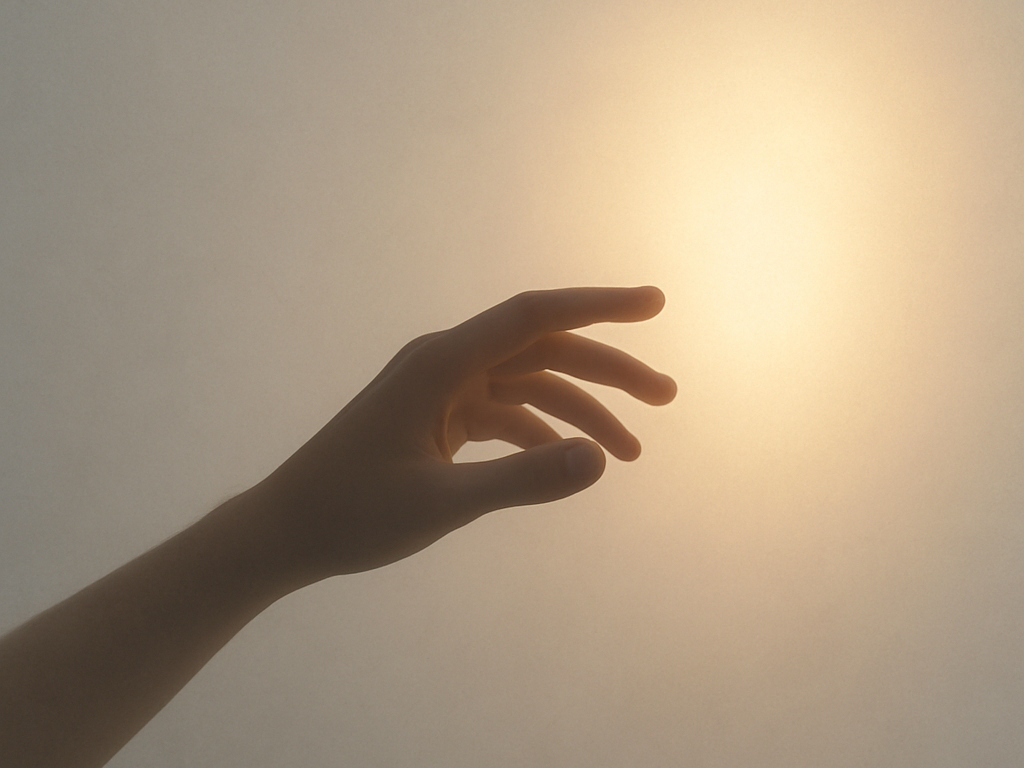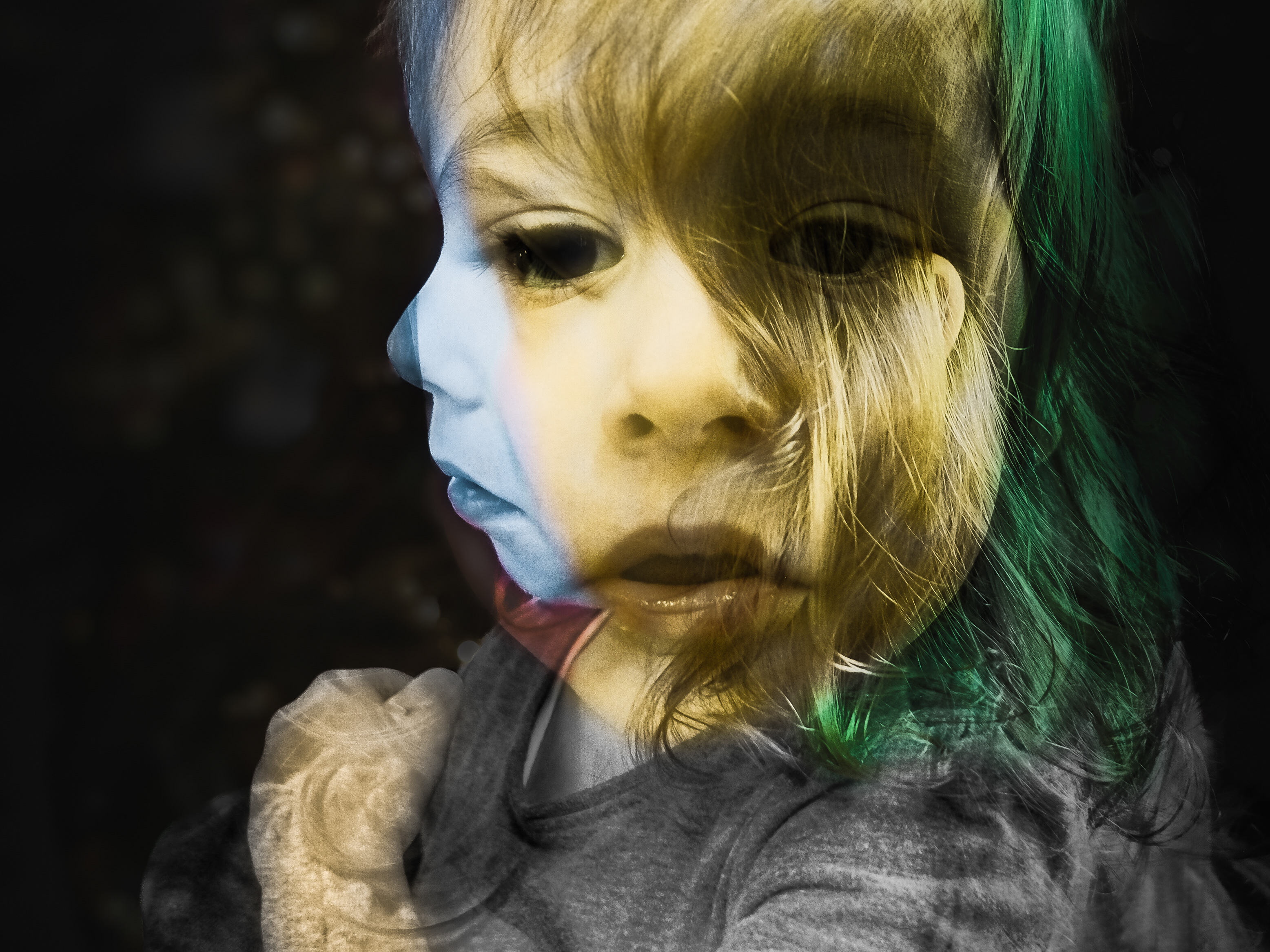Formal Study by Sophia Arden
1. Dissolving Form: Vision as Released Presence
The first impression is not form, but atmosphere.
Classical compositional lines dissolve into a rhythm of light and shadow that flows like music.
There is no central motif, no dominant subject. The whole image becomes one vast resonance, where light does not illuminate objects but summons space.
2. The Gentle Fracture of Perspective
The gaze slightly follows an inward path, yet classical perspective fractures.
Branches folding into one another, patterns of light and shadow form a layered surface.
Space is no longer linear depth, but a fold in time: a curvature that feels meditative rather than geometric.
3. Color as Transcendent Memory
Amidst gold and earthen browns, pink and blue suddenly break through – as if the sky were tearing the fabric of space.
Yellow here is not brilliance, but remembrance.
Pink is not sensuality, but vibration.
Blue is not background, but threshold.
Color does not dominate form but emerges within the spaces between.
4. The Unfolding of Time and Motion
Long shadows carry motion across the frame, yet multiple exposures weave an even deeper layer of temporality.
This image is not of one instant, but a gathering of instants – time folding back into itself, never identical.
This is the dissolution of temporality: vision not in time, but of time itself becoming visible.
5. The Figure as Passing Presence
In the lower third, a faint silhouette appears – perhaps a dog.
It does not dominate; it passes through.
It is not identity, but resonance within light.
This living trace becomes a question: what if the world does not seek to signify, but simply to be?
---
Conclusion: Form Folding Back into Silence
The Gold of Autumn does not dismantle form violently, but gently, reverently.
Visibility is not destroyed, but loosened.
Form does not govern, but returns home.
Vision does not conclude, but opens.
The image does not communicate, it touches.
This is not abstraction but a spiritual withdrawal of form –
a silent gesture within Komorealism that asks one question:
“How can we make visible without obscuring silence?”



